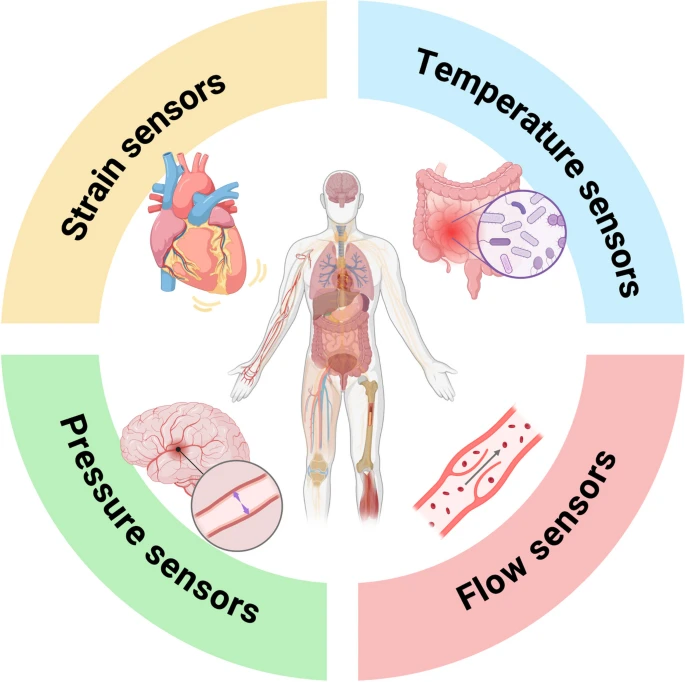
Abstract
Implantable sensors can provide access to accurate, continuous, and minimally invasive monitoring of physiological signals from internal organs and tissues, thereby facilitating timely diagnosis, closed-loop intervention, and advanced health management. Among the various types of implantable sensors, those capable of measuring physical parameters–such as temperature, force, and flow–are particularly important due to their ability to monitor physical conditions critical to nearly all organs and to provide insights into a wide range of health conditions. This review presents recent progress in four key types of implantable physical sensors: strain sensors, pressure sensors, temperature sensors, and flow sensors. It covers their engineering principles, design considerations, in vivo performances, and clinical relevance. The review also addresses critical challenges and future opportunities in the development of implantable physical sensors, such as flexibility and stretchability, biocompatibility, long-term stability, and the translation of these sensing technologies from bench to clinic.
Highlights
• Recent advances in implantable physical sensors are comprehensively reviewed.
• The engineering principles, design considerations, in vivo performance, and clinical applications of implantable physical sensors are discussed.
• Implantable physical sensors offer compelling opportunities for real-time, minimally invasive organ monitoring.


